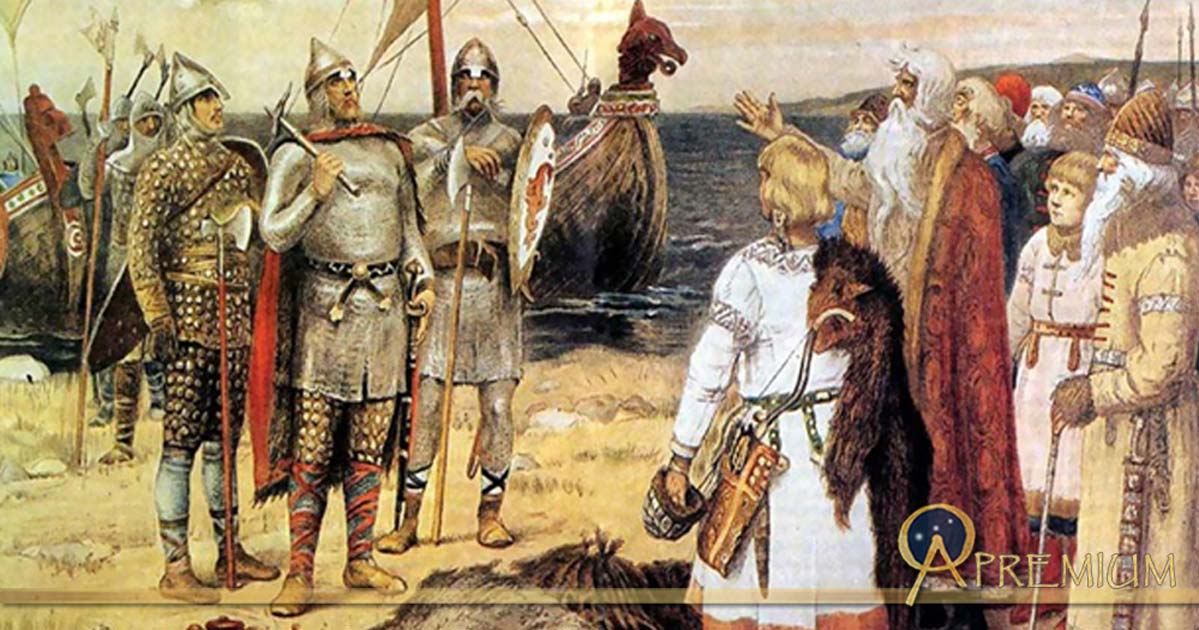Fierce in Battle, Fierce in Trading. Viking Sea States of Merchants – Part II
By the 9th century, the Scandinavian sea nomads that had tormented the British coastline, had conquered parts of the land and assimilated cultures. They established the Danelaw, territories where soon their equally honed skills as traders would lead to economic growth and riches. Yet setting up house, was not in every Dane’s blood, and the Vikings set their sights on the spoils of more distant lands.

Arm rings or armlets made by twisting thick and thin rods of gold or silver were common during the Viking period, when wealth was literally worn on one's sleeves. Arm rings, the portable savings accounts of the Vikings, would be collected, exchanged, or hacked up to provide weighed amounts of gold to purchase goods. 9 th century. Public Domain
York or Jorvik as it was called at the time, not only served as the Danelaw’s capital, but also as its main trading center in England, outside of London. Northern expansion of the Danelaw during the 9th and 10th centuries shows a marked increase in trade contracts. Many urban sites in the northern Danelaw display signs of domestic and foreign trade, let alone the trade taking place at a local level.
Furthermore, urban life in the Danelaw shows that the Scandinavian influence was not restricted to developing contracts with Scandinavia. Rather, one notices a vast network of trade taking place between many different nations under many contracts.
A map of York, indicates the River Ouse, which connects with the Trent River, and the Trent connects to the Fossdyke, which leads to the city of Lincoln. However, the Ouse and Trent Rivers also connect and flow into the North Sea. Two trade routes were established; where one leads to Lincoln and the other to mainland Europe. Moreover, multiple trade routes extended from York overland to Carlisle to the north, Preston to the west, and Chester to the southwest. All three towns of Carlisle, Preston, and Chester had trade routes that lead to the Irish Sea, where the exporting or importing of goods from the Viking trade settlement in Dublin were readily available. Such access to the Irish Sea and North Sea, established the Danelaw capital of York as a bastion of commodities.

Routes by the Great Heathen Army from 865 to 878 (CC BY-SA 3.0)
Such items for sale and want were steatite bowls and vessels from the Shetland Islands, jewelry and dress from Scotland and Ireland (likely to have passed through Viking Dublin), lava quern stones from the Mayen region in Germany, pottery vessels from the Rhineland, twilled and dyed cloths from Frisia, and finally one of the most expensive items during this time, which was silk from Byzantium.
This influx of imported and exported goods also caused a graying of the populace in the region. In other words, the network of towns grew steadily and so with it the wants and status of the population. With trade came the blurring of settlers and local peoples, in which one could hardly tell them apart. This suggests with certainty that the Scandinavians who had settled in England gradually adopted many of the Anglo-Saxon and Celtic ways, just as many of the indigenous peoples adopted certain aspects of Scandinavian culture.
Moreover, one can presume that with an increase in commerce came an increase of foreigners from mainland Europe, seeking to open new trade connections and to establish ties with the local people living within the Danelaw. The reinvigorated northern English economy under the Danelaw may have caused the Anglo-Saxons under King Alfred to take action immediately, thus initiating economic warfare in an attempt to survive. However, economic competition inevitably leads to military confrontation.
Like this Preview and want to read on? You can! JOIN US THERE ( with easy, instant access ) and see what you’re missing!! All Premium articles are available in full, with immediate access.
For the price of a cup of coffee, you get this and all the other great benefits at Ancient Origins Premium. And - each time you support AO Premium, you support independent thought and writing.

Cam Rea is an author and military historian. He has written numerous articles for Ancient Origins, Classical Wisdom Weekly, and has authored several books, including: The Wars of Israel: A Military History of Ancient Israel from the End of Judges to Solomon
Top Image: The Invitation of the Varangians: Rurik and his brothers Sineus and Truvor arrive at the lands of the Ilmen Slavs at Staraya Ladoga. Painted prior to 1913 by Viktor.M.Vasnetsov. (Wikimedia Commons )
By Cam Rea



















